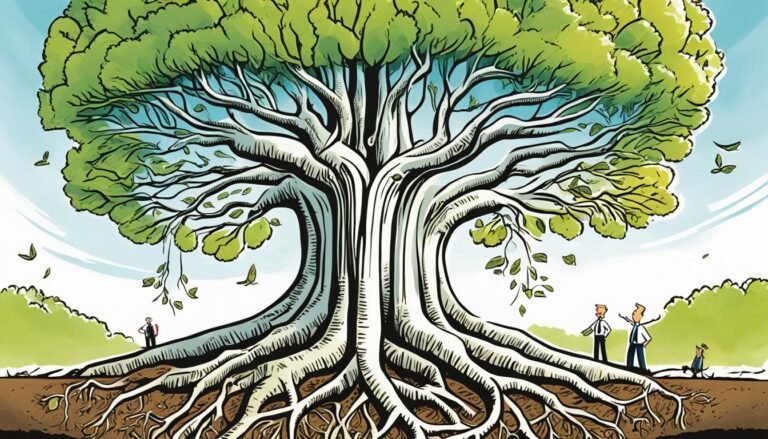Charitable Giving for the Elite: Effective Philanthropy Strategies for High-Net-Worth Individuals
Did you know that nearly 97% of high-net-worth individuals (HNWIs) contribute to charitable causes? This highlights the significant impact these wealthy donors have by helping shape society through their giving1. Figures like Andrew Carnegie have laid a strong foundation for large-scale giving, inspiring donors today. For example, MacKenzie Scott has given over $16.5 billion without any conditions, proving the huge effect of giving by the elite.
Research by places like the Center on Philanthropy at Indiana University shows that HNWIs have a lot of philanthropic power, making them able to change things in a big way1. Because rich households give 30% to 70% of all donations, the influence of these donors is clear1. Efforts by groups like the Milken Institute stress the need for a smart and focused approach in philanthropy to fully maximize this power.
Exploring deeper into philanthropy, we must see how these philanthropists use their wealth to drive meaningful changes. We’ll cover topics like legacy planning and strategic giving, looking at how these methods raise the influence of high-net-worth donors.
Understanding Philanthropy Patterns Among High-Net-Worth Individuals
High-net-worth individuals (HNWIs) stand out with their unique approaches to giving. They show a keen dedication to making their philanthropy count. Almost all of them, 97%, get involved in giving back, showing their big influence in this area1.
Historical Context and Trends
These wealthy individuals have been consistently generous. Between 1997 and 2009, their yearly family donations varied from $1.2 million to $54,0001. Surveys from 2006 to 2010 shed light on their giving habits, highlighting their historical impact1. They have always been major contributors, leading between 30% to 70% of all individual donations from 1989 to 20011. Granting a bigger part of their income, those earning above $300,000 have always stood out by contributing about 4.4%1.
Comparison with General Population Giving
Comparing their donations to the general population reveals big differences. While your average household may give between $147 and $2,000 yearly, wealthy homes give much more, from $1.2 million to $54,0001. This shows the huge impact HNWIs have with their giving. In 2000, 0.4% of million-dollar families gave 16% of all donations, underlining their essential role in philanthropy1.
In summary, the giving patterns of HNWIs shed light on their pivotal role in philanthropy. Their generous donations and strategic giving strategies underline their importance. They significantly aid charitable causes, driving positive societal changes.
Key Motivations for High-Net-Worth Philanthropists
High-net-worth individuals have different reasons for being philanthropic. They are driven by their personal values and a wish to leave a legacy.
Personal Values and Legacy
For many wealthy people, giving back is closely tied to what they believe in. They support various causes because it’s important to them, and they want to make a lasting difference2. Nearly all of them, around 97%, give money to charity2. This shows their strong dedication to their values and making a real impact.
Rich families often give a lot of money, not just to support their beliefs but also to make a difference that lasts. Back in 2000, about 0.4% of families making over $1 million a year gave 16% of all charitable donations2.
Social Responsibility and Influence
Aside from personal beliefs, the rich feel a duty to help society. They use their money for causes that matter to them, wanting to actually see their impact3. This feeling of responsibility means that wealthy families give a big part of all charitable donations, ranging from 30 to 70%2.
By supporting non-profit groups and social movements, the wealthy can really change things. Organizations like America for Bulgaria demonstrate how targeted philanthropic efforts can help bring about large social improvements and push for better human rights. So, these rich philanthropists can make a big difference by using their resources wisely, for example, to tackle big global problems.
Strategic Philanthropy: Making an Impact
Strategic philanthropy is now a key strategy for wealthy individuals. It makes their charity work more effective by having clear goals. They carefully choose where to focus their giving to make the biggest difference.
Goal Setting and Focus Areas
Setting clear goals in charity starts with knowing what’s important to you and the community. Rich philanthropists align their goals with big social needs like health, education, and helping the poor. For instance, U.S. Jews who faced antisemitism give a lot to causes that meet basic needs, offer healthcare, and education4. This helps them focus on what really matters, ensuring their help is significant.
New foundations in the past 25 years have also made a big impact by changing the way strategic charity works. They make 60% of all U.S. foundations and give 48% of the donations. This shows how vital fresh groups are in the charity world5.
Measuring Effectiveness
It’s important to have tools that can measure how well a charity is doing. By using these tools, philanthropists can see the direct results of their work and make adjustments. In some places like Georgia and Virginia, charitable actions have helped make big changes in laws. This proves that strategic charity works6.
By investing in projects like universal basic income and healthcare, philanthropy is fast at reducing social problems6. Checking the results of these projects helps donors make sure they are making a real, positive change.
Effective Vehicles for Charitable Giving
People with lots of money, known as high-net-worth individuals (HNWIs), have many ways to give wisely. They can choose from various vehicles for giving to make a big difference in charities. It’s key to know the available methods to match what they want to achieve with their donations and personal finance goals.
Donor-Advised Funds
Donor-advised funds (DAFs) are gaining popularity with HNWIs because they offer flexibility and tax breaks. According to the National Philanthropic Trust, the average size of a DAF account is around $86,194. But, if it’s in a community foundation, it could be much bigger, averaging at $547,6487. DAFs let the money stay growing over time, allowing donors to give out grants as they choose8. On average, DAF sponsors give out about 23.2% of the fund’s previous year’s assets in grants7.

Private Foundations
Private foundations are another strong choice for charitable giving. They give the donors a lot of say in how their money is used. While U.S. charity laws have mainly focused on promoting private foundations for major philanthropic efforts, there’s a shift to other options like LLCs and DAFs8. It’s important to carefully choose these foundations to make sure they help meet the donors’ charitable goals while being clear and impactful.
Critically Evaluating Beneficiary Organizations
Whether it’s through a DAF or a private foundation, picking the right charities to support is vital. HNWIs need to look at what the charity does, how it operates, and if its goals match their own. This helps ensure the money truly makes a difference. Acts like the Accelerating Charitable Efforts (ACE) Act are working to improve trust and openness in charity8.
Tax-Efficient Giving Strategies
For those who give a lot, using smart strategies is key to match their money and heart’s desires. Knowing how to use charitable tax incentives well can make giving more fulfilling. It also shapes the way they give.
Understanding Tax Incentives
Using tax rules wisely is a big part of planning how to give for a cause. Being smart about it can lead to good tax perks and help the causes you believe in9. In the U.S., people have been giving more each year. In 2018, this reached a huge $428 billion10.
Charitable Trusts and Estates
Adding philanthropic trusts and estates to a money plan can make sure your wealth goes where you want. It might also help avoid some taxes and make things easier for your family after you’re gone9. Experts in estate planning can design special, tax-efficient strategies just for you. This way, your giving can do the most good9.
Maximizing Financial Benefits
Looking for ways to maximize how you help and reduce taxes is key. Tools like charitable trusts can cut down what you owe the IRS and help you give more. Rich givers can keep supporting their causes while protecting their family’s future9.
Yet, it’s vital to remember that not everything is a sure thing. Talking to financial experts is always wise. They can help you avoid risks and make your money work better for you11.
Impact Investing for Social Change
Impact investing is getting more popular among wealthy people as they look to make a difference. It’s about putting money into projects that help the world, and still getting some money back. The Global Impact Investing Network (GIIN) says these investments aim to make things better for people or the planet while also turning a profit12.
Roughly $17.1 trillion is now tied up in ways that try to help and make money, making up about one-third of all the money that’s professionally managed in the U.S13. The Milken Institute says this mix of making money and doing good encourages rich people to use their business skills for causes they care about13. By blending their values with their investments, these people hope to do a lot of good through how they spend their money.
There are many ways impact investing can help, such as tackling poverty, promoting fair trade, and reducing pollution. In 2020, funds that considered things like the environment, social status, and how businesses are run did better than those that didn’t, by 4.3%, showing that do-gooder investments can pay off13.
People’s views on impact investing are shaped by debates over its worth, but some talks are just about the hype rather than what’s actually happening12. Impact investors care more about the positive changes they make than only making money, showing they really want to help13. These smart ways of giving and investing are getting more popular, because they show that investing in good causes can also be good for your wallet13.
Charitable Giving for the Elite: Maximizing Your Impact
Elite philanthropists aim to make the most impact with their money, intelligence, and connections. They work with experts and use their strong networks to increase their influence. Planning well and picking the right projects prevents common mistakes. For example, ensuring their cause aligns and funds go where they are needed. More and more, rich people are asking for expert help. This shows a move towards smarter, more data-central philanthropy.
Leveraging Financial, Intellectual, and Social Capital
Top philanthropists use their money, knowledge, and social status to make big changes. Choosing qualified charities ensures their donations really make a difference14. They can also give appreciated assets, like stocks, for extra tax benefits. Leaders in charitable giving, such as Susan Wojcicki and MacKenzie Scott, are commendable. They have given large parts of their wealth to help others through The Giving Pledge. Their efforts notably support education and healthcare15.
Avoiding Common Pitfalls
Falling out of sync with the chosen cause is a big mistake in giving back. It leads to funds not being used well. To prevent this blunder, it’s key to carefully list and track donations. Especially if these deductions surpass standard tax rules14. This not only makes sure money helps effectively but also comes with benefits for the donor. Giving a life insurance policy to a charity can yield a tax cut for the donor. This adds up to good for both the wallet and the world14.
Role of Wealth Management in Philanthropy
Wealth management is key for the efforts of rich people to give back. It helps them make their charity work really count. This is done by adding charity into their overall finance plan. Managers in wealth planning know a lot about money. They mix different parts of financial planning, like ways to cut taxes, planning for what happens after death, planning for tax breaks on donations, and more16.
Integrating Philanthropy into Financial Planning
Top-notch wealth planning pulls together many different expert areas. It combines the latest legal and money strategies with a focus on what matters to people. When they work with wealth advisors, the rich get to better match their giving goals with how they manage their money. This can make their charity efforts fit well with their overall money plans. A good number, about 32%, of those with over $5 million managed by pros have handled charity works17.
Using Wealth Advisors
Wealth management for charity uses both personal and technical skills. Advisors care more about how they get along with their clients than just being good at numbers. This personal touch helps them really get what the clients care about. In 2020, super rich people, those with at least $30 million, gave $85 billion to charity. This big number shows why getting advice from these experts is smart17.
Legacy Planning for High-Net-Worth Donors
Legacy planning is key for wealthy individuals who want to make a long-lasting difference. It allows them to support charities in their future plans. About 97% of these people do give to charity1. They use special ways like donor-advised funds and trusts. These options provide tax benefits and let them give in flexible ways18.
Creating plans to keep taxes low, like using trusts and life insurance, is also common. This ensures that more money goes to the causes they care about18.
Rich clients often have a mix of assets from different places. This makes legacy planning more complex18. Family situations, like having step-families, can add to the challenge. Some family members might not fully understand financial matters18. Leading talks about what inheritance will look like helps. It ensures everyone is on the same page about the future of their giving.
For those passing down businesses, careful and forward-looking planning is crucial18. Working with experts in law, tax, and business can make this smoother. It helps make sure the business part of the estate is well taken care of. They must keep up with changing laws around planning and transferring wealth18.
Encouraging clients to write ethical wills or personal touch statements is another way to enhance their giving legacy. This method makes their giving more heartfelt and aims to connect different generations. Supporting sustainable projects, like green bonds and farming funds, is another great tool. It lets clients meet their financial goals while bettering the world18. The best legacy plans are those tailored to the client’s unique situation and goals. This includes family background, how much risk they are okay with, and their giving values.
Conclusion
Rich individuals getting into philanthropy could really change our world. They use various smart ways like donor-advised funds and impact investing. This lets them make big changes for better. But, it’s key to notice that most rich people only donate a small part of what they have19. And sometimes, their giving may not be for the greater good, making social gaps even wider19.
For elite philanthropists, it’s important that their giving lines up with what they stand for. It should also meet social needs and smart money management strategies. Yet, there are hurdles like not supporting tax changes and letting personal and political views guide their charity work2019. Looking back, figures like George Washington talked about worries of such philanthropy being controlled by a few21.
A lot of the money for doing good stays in rich countries. Big names like Harvard and Cambridge often get a lot. Rich donors need to look at their giving as a whole. This means managing money wisely and choosing who gets help carefully. By doing this, they can truly make a big difference. They can help grow a better world and make lasting social changes everywhere19.
Source Links
- https://scholarworks.indianapolis.iu.edu/bitstream/1805/11028/1/review-of-literature-on-giving-and-high-net-worth-individuals-october-2011.pdf
- https://scholarworks.indianapolis.iu.edu/bitstream/handle/1805/11028/review-of-literature-on-giving-and-high-net-worth-individuals-october-2011.pdf?sequence=1
- https://www.learningtogive.org/resources/motivations-giving-and-serving
- https://philanthropy.indianapolis.iu.edu/news-events/news/newsletter/philanthropy-matters/2024-issues/mar-2024.html
- https://cppp.usc.edu/wp-content/s2member-files/A-Generation-of-Impact.pdf
- https://ssir.org/articles/entry/strategic-philanthropy-went-wrong
- https://inequality.org/great-divide/daf-sponsor-numbers/
- https://www.insidephilanthropy.com/home/2023/1/24/for-profit-philanthropy-is-eroding-the-legal-foundations-of-charitable-giving
- https://www.raymondjames.ca/opelite/how-we-help/estate-planning-and-strategic-charitable-giving?sc_lang=en
- https://www.jec.senate.gov/public/index.cfm/republicans/2019/11/reforming-the-charitable-deduction
- https://www.jpmorgan.com/insights/wealth-planning/philanthropy/selecting-the-right-assets-to-give-to-charity
- https://www.urban.org/sites/default/files/publication/104505/impact-investing-and-critiques-of-philanthrocapitalism.pdf
- https://www.ramseysolutions.com/retirement/what-is-impact-investing
- https://www.eliteincomeadvisors.com/resource-center/money/year-end-charitable-gifting-and-you
- https://www.linkedin.com/pulse/demystifying-giving-pledge-requirements-guide-joining-edward-standley-2cgoe
- https://palmplanninggroup.com/wp-content/uploads/2023/05/1A-2019_03_CEGAM_FLASH_REPORT_WEALTH_PLANNING_WORD_VERSION-PRINTER.pdf
- https://www.linkedin.com/pulse/get-attention-wealthy-philanthropists-pkf-texas
- https://www.aretewealth.com/2024/04/16/legacy-planning-ensuring-your-hnw-clients-wealth-lasts-for-generations/
- https://phys.org/news/2021-03-elite-philanthropy-problems-social-inequalities.html
- https://www.beaconcollaborative.org.uk/a-response-to-giving-by-the-super-rich-is-perpetuating-social-inequality/
- https://www.cafonline.org/about-us/blog-home/giving-thought/the-role-of-giving/does-philanthropy-help-or-hinder-democracy







